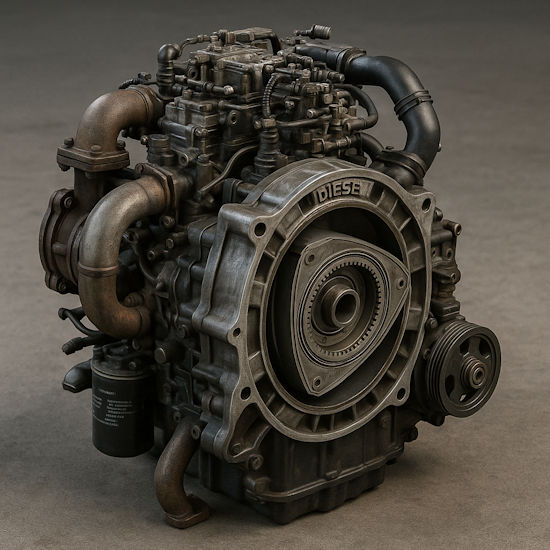
When most people hear “Wankel engine,” they think of Mazda sports cars, compact design, and the signature high-revving hum. But what if someone tried to combine the Wankel rotary engine with diesel technology? Could such a fusion ever work? Let’s dive into the history, theory, and reality of the elusive Diesel Wankel engine.
The Basics: Wankel vs. Diesel
The Wankel engine, invented by Felix Wankel in the 1950s, operates with a rotating triangular rotor inside an oval-like chamber. It’s compact, smooth, and mechanically simple compared to traditional piston engines. However, it’s also known for challenges like sealing issues, lower efficiency, and higher emissions.
Diesel engines, on the other hand, rely on compression ignition — fuel ignites due to high pressure and temperature, not a spark. They are known for their durability and fuel efficiency, but require high compression ratios and robust internal components.
Combining these two very different engine concepts sounds innovative — but in practice, it’s riddled with problems.
Why a Diesel Wankel Engine Is So Difficult
Here are the main technical hurdles:
- Compression Ignition Is a Problem
The Wankel engine doesn’t compress air as much as a diesel engine does. Its relatively low compression ratio simply isn’t enough to reliably ignite diesel fuel without some kind of assistance — defeating the purpose of a true diesel. - Sealing Issues Get Worse
Wankel engines already struggle with sealing the rotor tips (apex seals). Introducing the high pressures and combustion temperatures of diesel fuel would make this worse, leading to rapid wear and performance loss. - Efficiency and Emissions
Wankel engines have lower thermal efficiency than piston engines and higher hydrocarbon emissions. Diesel combustion demands precise control and high efficiency — something the Wankel design struggles to provide.
Experimental Prototypes and Concepts
Despite the difficulties, there were a few attempts to make it work:
- NSU’s Experiments (Germany, 1960s–70s)
German automaker NSU, who brought the first Wankel-powered car to market, also experimented with diesel versions. These remained prototype-level projects and never reached production due to technical limitations. - U.S. Military and Aerospace Interest
Some U.S. defense contractors explored diesel-fueled Wankel engines for use in drones, generators, or other compact systems. These often used modified diesel fuels and sometimes external ignition systems to bypass the compression ignition issue. - HCCI and Advanced Combustion Concepts
More recently, there have been theoretical models combining the Wankel engine with Homogeneous Charge Compression Ignition (HCCI) — a form of “diesel-like” combustion. But these concepts remain experimental and far from commercial viability.
So, Did a Diesel Wankel Ever Truly Exist?
No. There has never been a fully functional, production-ready Diesel Wankel engine. Every effort to create one hit serious technical roadblocks. While research and prototypes have existed, none were viable for widespread use.
Final Thoughts
The idea of a diesel-powered rotary engine is a fascinating “what if” of engineering history. While the Wankel engine is a marvel of mechanical ingenuity and diesel power remains a pillar of industrial and heavy-duty applications, the two simply don’t mix well.
For now, the Wankel engine lives on in niche applications — like Mazda’s recent use as a range extender — but with traditional fuels or even hydrogen. Diesel, it seems, is one arena the rotary engine won’t conquer.
Curious about other unusual engine designs or forgotten prototypes? Let me know and I’ll dig deeper into the archives of automotive innovation!
